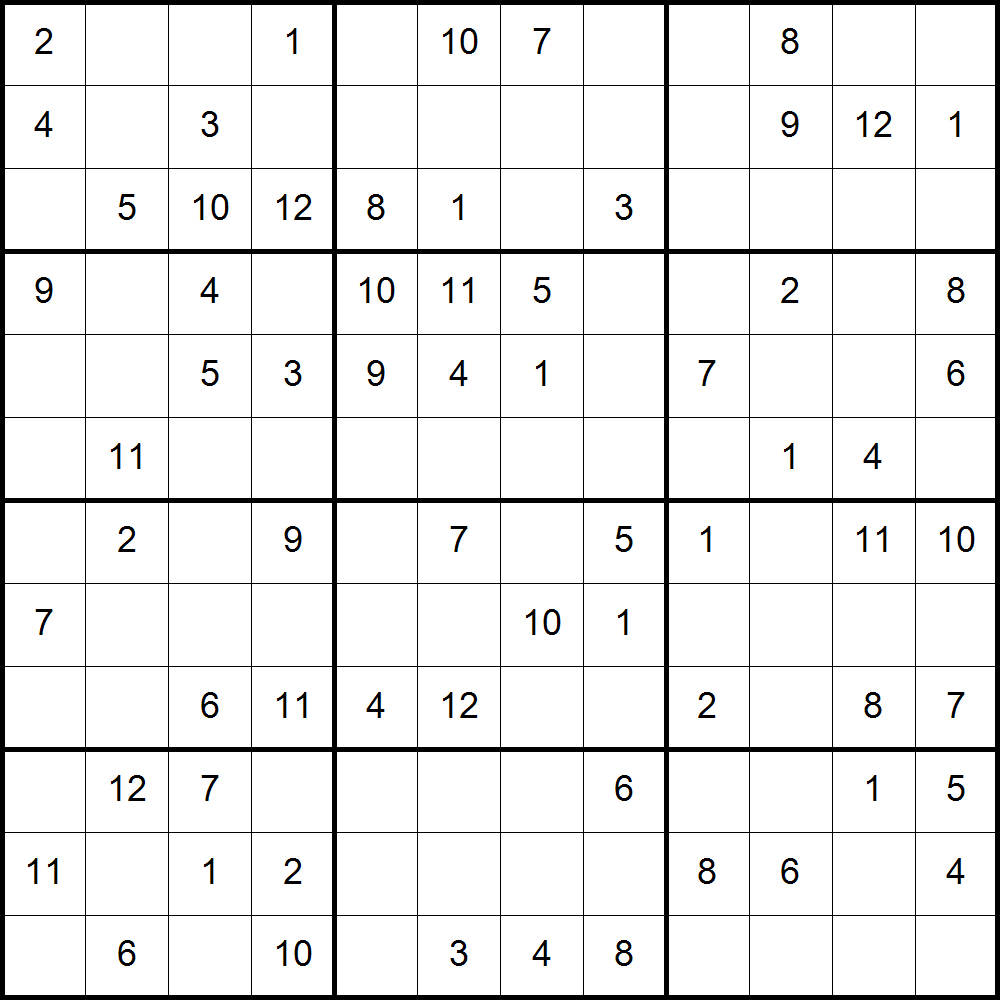
When the "Solution check" option is active, each time you enter a digit, the solver checks if the puzzle is still solvable. When the "Candidates" option is active, you can manually remove candidates by clicking on them. You can also solve a sudoku puzzle by yourself if you want. Also the number of inner boxes is in a × game for most variants, there can be exceptions. You can print the puzzle by clicking the "Print" button. In general, 2 colors are needed to mark all inner boxes. If you just want to see the solver in action, click the "New" button, select the difficulty level, click the "Generate" button and then click on the "Hint!" button. You can enter sudoku as a string of 81 digits (0 for a blank cell) in the "New" box and click "Import". You can also navigate between cells with the arrow keys and you can use the 0 to 9 keys to enter a digit. To enter a digit, click in the middle of the selected cell and click the corresponding button under the grid. You can also solve sudoku by yourself using this solver.Įnter your puzzle below, click the "Hint!" button and get a hint for the next step with an explanation below the grid. In the fourth column there is one more cell that can have the digit 1 (R8C4), so the cells R2C4 and R5C4 do not form a conjugate pair, but they form a so-called bridge between groups. In the sudoku diagram below we have two groups (light / dark yellow group, light / dark green group) conjugate pairs for the digit 1. The application can also generate and print sudoku. The Color Wing technique uses more than one group of conjugate pairs for analysis. This site contains Sudoku Solver, a very useful application which is able to solve a sudoku puzzle step-by-step and give you an explanation of each step.

Sudoku SolverIf you have a problem or you got stuck with solving sudoku, this site is just for you. Sudoku is a logic-based, combinatorial number-placement puzzle. append (])]) # Output the DIMACS CNF representation # Print the header line print ( "p cnf %d %d " % ( N * N * N, len ( cls ))) # Print the clauses for c in cls : print ( " ". append () # The clues must be respected for r in range ( 1, N + 1 ): for c in range ( 1, N + 1 ): if clues in digits.

append () # Each subgrid has the value v for sr in range ( 0, D ): for sc in range ( 0, D ): cls. It is no different to using 9 different colors to color the vertices in a.

The rules are simple: each number can only. So we can say that Sudoku can be viewed as Graph and thus can be solved by Graph Coloring with a Chromatic Number, G 9. In classic sudoku, the objective is to fill a 9×9 grid with digits so that each column, each row, and each of the nine 3×3 subgrids that compose the grid contain all of the digits from 1 to 9. append () # Each column has the value v for c in range ( 1, N + 1 ): cls. Sudoku is a logic-based, combinatorial number-placement puzzle. append () for v in range ( 1, N + 1 ): # Each row has the value v for r in range ( 1, N + 1 ): cls. Thus, from the cells that 'see' both types of cells simultaneously, we can eliminate the digit 7. Either the light yellow cells will be 7 or the dark yellow cells will be 7. In the sudoku diagram below, we have a group marked for the digit 7.

append () # The cell at (r,c) has at most one value for v in range ( 1, N + 1 ): for w in range ( v + 1, N + 1 ): cls. Color Trap The Color Trap is based on the analysis of one group of conjugate pairs. \(%\definecolor # encoding the fact that the cell at (r,c) has the value v def var ( r, c, v ): assert ( 1 <= r and r <= N and 1 <= c and c <= N and 1 <= v and v <= N ) return ( r - 1 ) * N * N + ( c - 1 ) * N + ( v - 1 ) + 1 # Build the clauses in a list cls = # The clauses: a list of integer lists for r in range ( 1, N + 1 ): # r runs over 1.,N for c in range ( 1, N + 1 ): # The cell at (r,c) has at least one value cls.


 0 kommentar(er)
0 kommentar(er)
